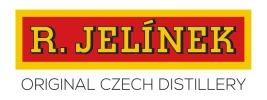Dialects of the Czech language
Written by Martin Bursik and Martin Kuchar
Learn more about Dialects of the Czech language
The Czech Republic, also called Czechia, is a country located in Central Europe. It is a small country which has three historical parts Bohemia, Moravia, and Silesia. Collectively it is often called the Czech lands
Czech is the official language which is a West Slavonic language and belongs to a family of Indo-European languages. It is divided into standard and non-standard Czech. It is similar to Slovak and to some extent with Polish, Slovenian, Sorbian, and Kaszubian. Its origins are found in a proto-Slavic base in the 9th century Cyril and Methodius the first script „hlaholice“ was established, however, due to Catholicism Latin script prevailed. Besides Latin and old Greek the Czech language was mostly influenced by neighboring German and today the influence of English is dominating.
The dialects of Czech are divided into five categories, mostly reflecting the entities of which the Czech Republic historically consists of. Those groups are Bohemian, Moravian, Moravian-Slovak, Czech Silesian and the Mixed areas
Bohemian Dialect:
Location Most apparent features Example In standard Czech Actual meaning in English Notes
Central Bohemian Region + Prague Leisure declination; prosthetic „V“ Kysely mlíko, novej vobjev; ve vokne. Kyselé mléko, nový objev; v okne. Sour milk, new find; in a window Referred to as a common Czech inter-dialect
Prague dialect – Prague Exaggerated wide „É“ To je takovéé pěknéé! To je tak pěkné! That’s so beautiful! Just needs to be heard…
West Bohemian Plzeňský region „Tůtání“; Possessive pronouns ending „ovo“ Tůto jə mámy a bráchovo. (phonetically) Toto je matky a bratra. This belongs to my mother and brother. Plus exaggerated vowels lengths.
Chodský dialect Domažlice district (The dialect is fading away) Prosthetic h;
Germanisms Hin sa hukaže! Hudíléjte tu jíčko špalír. Jen se ukáže! Wait for it! Vytvořte zde řadu. Make a queue here.
East Bohemian Hradec & Pardubice regions Varied declination; „v“ => „u“ s Frantem; ke strejcoj; with Franta my uncle: s Frantou; ke strýci; with Franta my uncle. Téče mi kreu. I’m bleeding . Teče mi krev. I’m bleeding.
Krkonoše dialect Liberec & Hradec regions No syllabic „L“ nor „R“; Polonisms Kérkonošské poudačky, fairy tales; łžice spoon Krkonošské pohádky; fairy tales: Krkonoše tales;
The dialect is fading away.
* = „Hin sa hukaže! “ is a popular quote by Jan Sladký Kozina (a leader of the Chod revolt in 1695) during his execution.
The Kladsko dialect – used to be similar to East Bohemian dialect and was spoken in today’s powiat kłodzki in Poland when this area (Czech: Kladsko) was a part of the country (in those days
The Lands of Bohemian Crown – Bohemia, Moravia, Silesia and Lusatia. No Czech people live in that area since the Second World War anymore and the dialect has completely vanished away.
The Moravian dialects are quite different from the Bohemian ones. The territory of Moravia is linguistically diversified. The reason can be due to the lack of a Moravian cultural and political center. There are three major groups of Moravian dialects: Eastern Moravian (Moravian-Slovak), Central Moravian (Hanakian) and Silesian (Lach). Phonological differences between Moravian dialects are shown on the sentence “Put the flour from the mill in the cart.”
– Standard Czech: Dej mouku ze mlyna na vozík.
– Central Moravian: De moku ze mlena na vozék.
– Eastern Moravian: Daj múku ze młyna na vozík.
– Silesian: Daj muku ze młyna na vozik.
The Czech language is very complex language but it is one of the most beautiful languages in the world due to its diversity, so Czech people should be proud that they have their own interesting language with many forms and long history
Moravian
Moravian dialects (also „Hanácká nářečí“) are commonly used in Vysočina, Brno and Olomouc regions of the Czech Republic. Some people even consider those as its own Moravian language, however it causes controversies.
Most remarkable differences would be:
– í/ý goes é (Mor.: mlén × Cz.: mlýn) – mill
– y goes e (rebe × ryby) – fish (plural)
– the diphthong ou goes ú (múka × mouka) – flour
– different declination (na koňa × na kone – on the horseback), (pro nasu slepicu × pro nasi slepici – for our hen)
– Já su × já jsem (I am)
Sometimes could be heard also prosthetic H (around Tisnov). In the Vysocina region are Moravian words used within the Czech grammatical rules.
Also, Moravian historical capital – Brno – has its own city dialect, a mixture of Moravian dialects and German (as it used to be till the end of the WW2 a city with German majority) and it is called hantec [ɦantets]. An example: šalina (in Czech: tramvaj – tramway) from German: Elektrische Line [elektriʃe li:ne]
Moravian-Slovak
Moravian-Slovak or East Moravian dialects (Moravskoslovenské nářečí / Východomoravské nářečí; Slovácké nářečí; Valašské nářečí) are a subgroup of Moravian dialects used in Zlín region. They are highly influenced by Slovak language and create a natural transition zone between Czech and Slovak.
Most remarkable differences would be:
– diphtong ou goes u (MSl.: vedu × Cz.: vedou) – they lead
– i goes u (bruch × bricho) – abdomen
– í goes é (rect × rict) – to tell
– ej goes aj (vajco × vejce) – an egg
– spívu × zpivam (I sing) in Valassko
– usage of Slovak ľ, ĺ, ŕ letters in Slovácko
Czech Silesian
Silesian dialects are spoken in Czech Silesia in the Moravian-Silesian region of the Czech Republic. They are highly influenced by the Polish language in its spoken and even written from (usage of ś, ź or ł letters not used in Czech). Most remarkable differences would be:
– usage of ONLY short vowels = Ostravaci maji kratke zobaky. (literally „Ostrava’s people have short beaks.“)
– accent on the one before the last syllable (as in Polish)
– differences between l and ł but ť and ď make the same sound as Polish ć
– in the Těšínsko area is Czech used as a minority language and Polish takes its dominant role
Mixed areas
The areas where Germans made up 50% of the population and after WW II they were expelled. Those areas were resettled by Hungarians from south Slovakia, Gypsies, Volhynian Czechs or volunteer settlers from various parts of then Czechoslovakia so there couldn’t arise any specific dialect so people could communicate with each other. Today these areas have taken after its geographically closest dialects.
The non-standard Czech variations are slang, argot, and common Czech, which is often defined as a dialect used in common speech in Bohemia and western parts of Moravia. It is used primarily in and around Prague but since the later 20th century it has become omnipresent in most parts of the Czech Republic. Common Czech has some regular differences from the standard morphology and phonology. These variations are common among all Common Czech speakers.
– é usually replaced by ý/í: velký město (big city), lítat (to fly);
replaced by ý/í: velký město (big city), lítat (to fly);
– ý/í replaced by ej: malej kluk (little boy), bejt (to be), plejtvat (to waste);
– prothetic v- added to most words beginning o-: votevřít vokno (to open the window) – stand.: otevřít okno;
– unified plural endings of adjectives: malý lidi (small people), malý děti (small children) – stand.: malí lidé, malé děti;
There are more Bohemian dialects mostly used in rural areas. In the past, they were more widespread but in the second half of the 20th century use of the dialects began to weaken. Among the Bohemian dialects belong Central Bohemian dialects, Northeastern Bohemian dialects, and Southwestern Bohemian dialects. Part of the Southwestern Bohemian dialects is Chod dialect which is used in the region called Chodsko around the town of Domažlice. It is more different from the other dialects in this group and it is one of the most well-preserved regional dialects in the Czech Republic. There are some features.
– prothetic h before some vowels, especially u: hukázat (stand.:ukázat, “to show”);
– d changes into r between vowels: stand. Czech dědek > děrek, “old man”;
– The ending -ovi to denote “the family of…” is -ouc in the Chod dialect (Novákovi > Novákouc, “the Nováks”);- long vowels instead of short in possessives (naše > náše and vaše > váše) and infinitives (volat > volát, “to call”).
Czech language is very complex language but it is one of the most beautiful languages in the world due to its diversity, so Czech people should be proud that they have their own interesting language with many forms and long history


